Reading Gaol is best-known worldwide because of its most famous prisoner: the legendary poet and playwright Oscar Wilde, who immortalised his experience of imprisonment in his iconic poem,The Ballad of Reading Gaol.
In this blog, join us as we tell the story of Reading Gaol, from its origins in the medieval period, to contemporary campaigns to preserve the site, building and the Gaol's legacy for the future.
A tale of three prisons
For many years, Reading had three locations for imprisonment: the County Gaol, the Borough Bridewell, and the Compter Gaol. Gaol is the old spelling for jail.
The County Gaol was in Castle Street on the site now occupied by St Mary’s Church. This was probably both the King's and Abbot's gaol in the medieval period. It housed both convicted felons and debtors. Men and women shared a day room, but had separate night rooms. The men occupied a large dungeon. This prison closed in 1793.
The Borough Bridewell opened after King Henry VII gave permission for the town's guild (the predecessor to the Borough Council) to have a gaol 'in some convenient place within said borough'. In 1543, the nave of the former Greyfriars church was acquired for use as the Guild Hall. However, by 1578, it had become a hospital for the poor and from the early seventeenth century it was the Borough Bridewell and house of correction. It had closed by the 1850s.
The Compter Gaol was known as the ‘counter’ in 1560, and was later located within the former main gateway of Reading Abbey adjacent to St Laurence's church. It seems to have been used by the Borough as a debtor prison until it was closed and partly demolished in 1786.
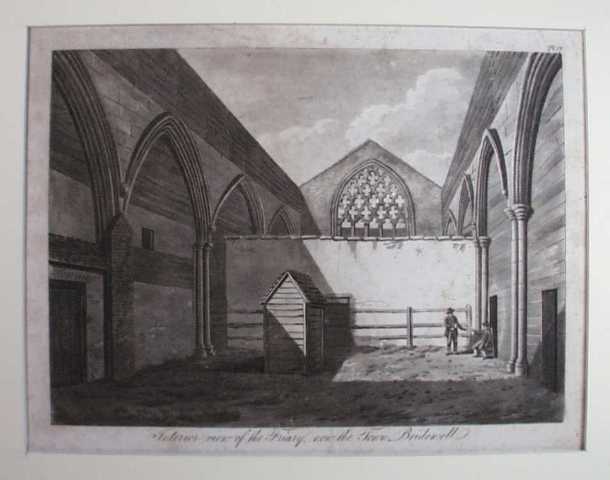
Town Bridewell, in the nave of Greyfriars church, Reading, 1816 (museum number 1931.40.3)
House of Correction and County Gaol (1786-93)
The first place of imprisonment to open in The Forbury was a new House of Correction in 1786.
In 1791, it was decided that the inadequate County Goal in Castle Street would be closed, and the House of Correction would be enlarged to form the new County Goal in 1793.
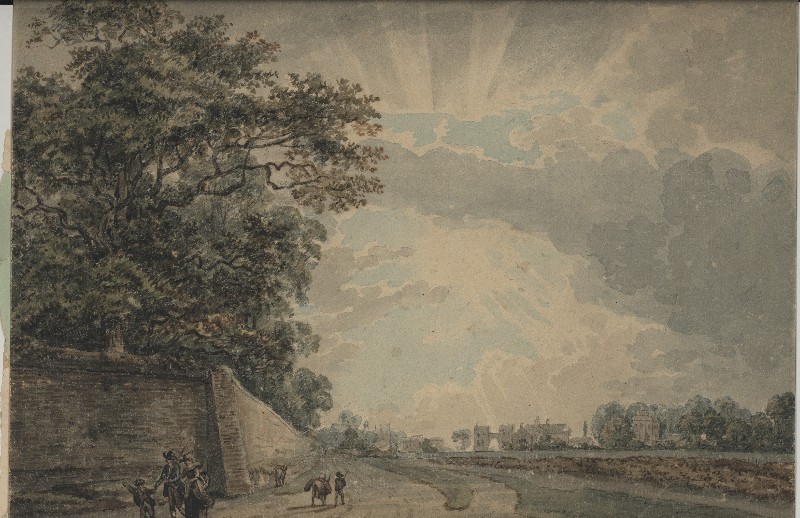
Wall of the County Gaol in a watercolour by Paul Sandby (1731-1809), early 19th century (museum number 2014.28.1))
The New County Gaol (1842-1844)
The present neo-Tudor building was built between 1842 and 1844 and was one of the earliest designs by George Gilbert Scott (later Sir Gilbert). He designed it with his partner William Bonythorn Moffatt. Their design was based on the new model prison at Pentonville, implementing the ‘separate system’ of solitary confinement. The London Illustrated News of 17 February 1844 was impressed by the new building: ‘Standing as it does, on the rising ground at the entrance to Reading, and close to the site of the venerable abbey, this new prison is from every side the most conspicuous building, and architecturally, by far the greatest ornament to the town’. Berkshire Record Office has the original plans for the 1840s Gaol. The main building was for men, and there was a separate wing (since demolished) for women.
Between 1835 and 1845, Scott and Moffatt also designed over 50 workhouses, 15% of the national total. In his later years, Scott was recognised as one of the most influential and prolific architects of his generation. Scott’s gothic revival masterpieces include the Midland Grand Hotel at St Pancras Station and the Albert Memorial in Hyde Park, London. He also restored Reading’s Abbey Gateway in 1861.
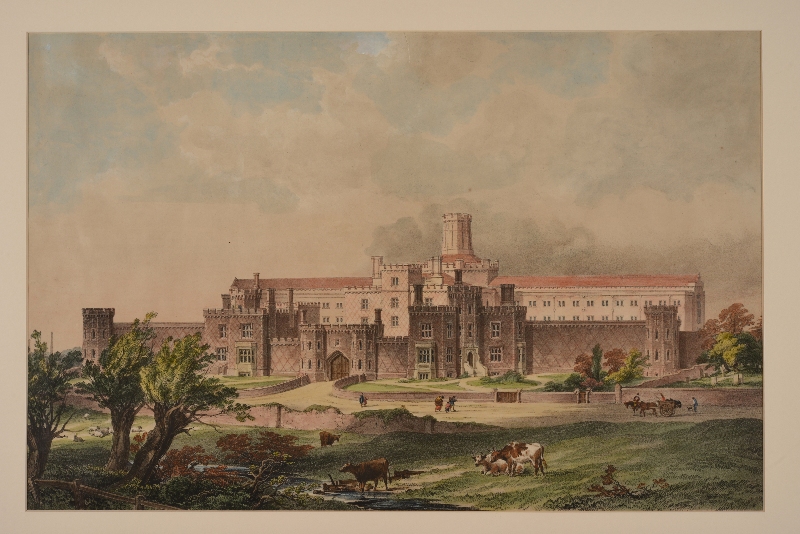
The New County Gaol, Reading. Lithograph print by George Hawkins, published by Day and Haghe, 1844 (museum no. 1981.11.1)
Crime and punishment
The separate system meant that prisoners were only allowed out of their individual cells for chapel and exercise. During chapel, they sat in special cubicles and this was the only place that they were allowed to take off the special mask they had to wear, which gave them a view of their feet and nowhere else. Many inmates were also sentenced to hard labour. Up to ten prisoners at a time would operate hand cranks to pump water for the prison into a cistern.
Between 1800 and 1913, 35 executions by hanging took place at Reading Gaol. All the executions were public events until 1877. The image below shows the last execution in the first County Gaol in The Forbury, which took place in 1834 (not 1841 as stated on the document). The diary extract of 1828 refers to the execution of Henry Burnett, Thomas Field and Samuel White for shooting a gamekeeper while they were poaching. A crowd of 10,000 people witnessed their hangings outside the prison gate.
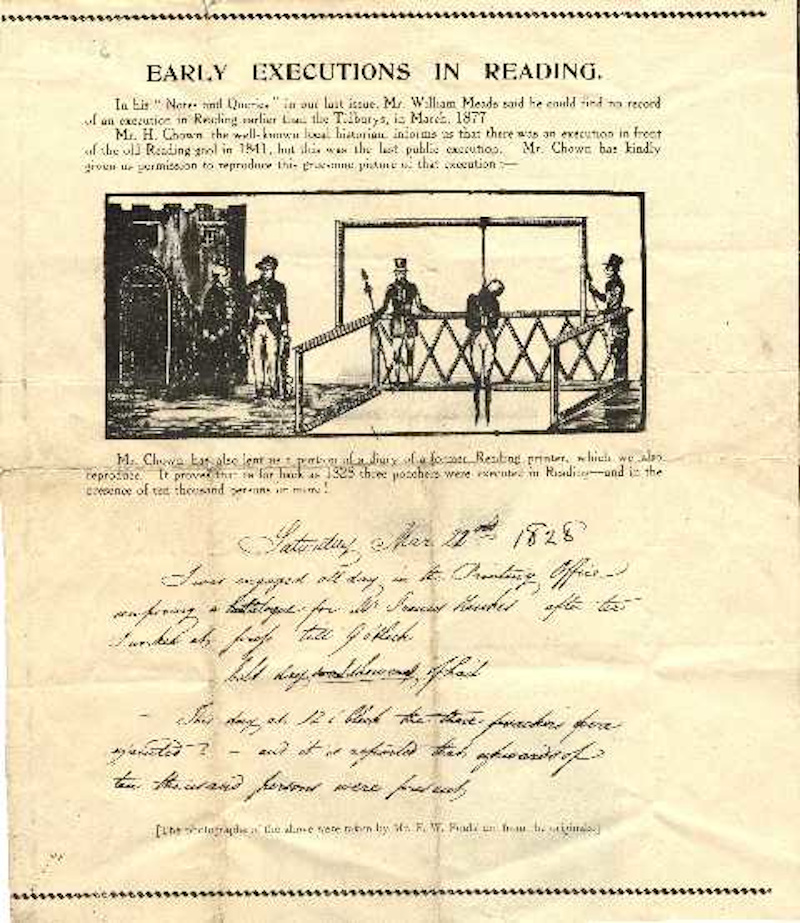
Early executions in Reading document (reproduction) (museum no. 1958.336.1)
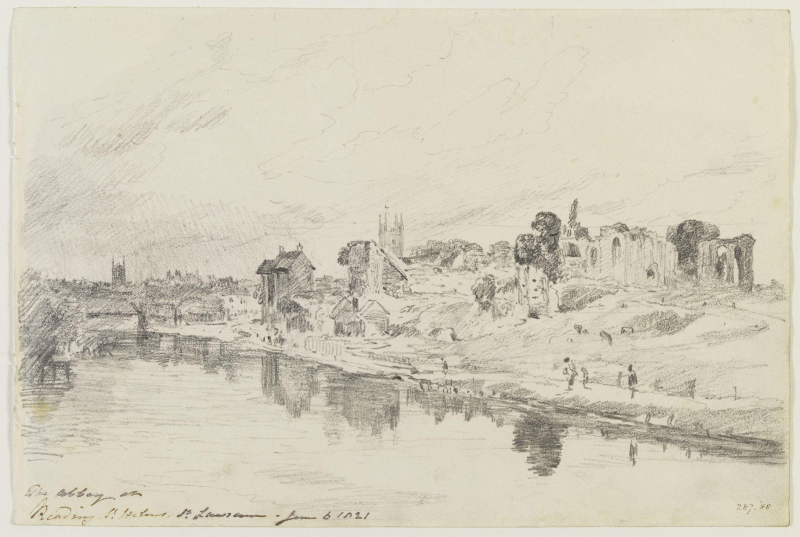
A view of Reading from the river, drawing by John Constable, 6 June 1821 © Victoria and Albert Museum, London. This shows the Abbey Ruins and the area on the right now occupied by the Victorian prison.
Oscar Wilde and Reading Gaol (1895-1897)
Oscar Wilde, the poet and playwright, was the most famous inmate of Reading Gaol. In 1895, he was convicted of ‘acts of gross indecency with another male person' and sentenced to two years with hard labour. In Reading Gaol he became prisoner C.3.3 - the occupant of the third cell on the third floor of C wing.
At first, Wilde was treated harshly. However, a few warders became friendly towards him. One warder, Tom Martin, frequently broke prison rules and gave Wilde newspapers, magazines and ginger nut biscuits made in Huntley & Palmers’ nearby factory. Wilde and his family had been friends of Walter and Jean Palmer before his disgrace, and visited their home in Reading. Later he was allowed pens and paper, and between January and March 1897 he wrote De Profundis, a 50,000-word letter to his former lover Lord Alfred 'Bosie' Douglas, which was published in 1905 after his death.
Wilde was released on 18 May 1897. He immediately left for France where he wrote the poem The Ballad of Reading Gaol. He died in France in 1900. The Berkshire Record Office's Oscar Wilde and Reading Prison online gallery has more information about Wilde and his time at the Gaol.

Reading Prison issue ID card mocked up for Oscar Wilde, October 2013 (museum no. 2013.526.47)
A Place of Internment (1916-1920)
During the First World War, Reading Gaol was reclassified as ‘H.M. Place of Internment’. Internment was the act of detention without trial. Over the course of the war, Reading played host to various ‘aliens’. The majority were inmates of German origin but Latin Americans, Belgians, and Hungarians were also interned. In July 1916, the ‘aliens’ were joined by Irish internees who had been involved (either directly or indirectly) in the Easter Rising in April 1916. Many high profile figures in Irish politics were detained at Reading, including Arthur Griffith (1872-1922) who was President of the Irish Free State from January to August 1922. By March 1919, the last Irish detainees were returned to their homes, and the prison closed in January 1920.
The Second World War (1939-1945)
Following the outbreak of the Second World War, the prison was cleaned up and made ready for use as a place of internment again, but was never used. In 1940,a group of boys who had survived the bombing of Portland Borstal were transferred to Reading and remained until 19 October. Between 1945 and 1946, it became a Canadian Army military detention barracks.
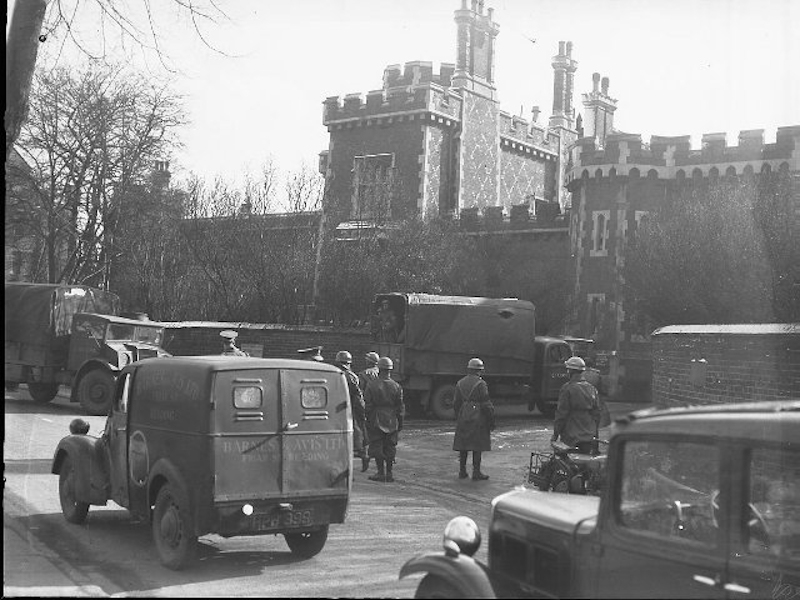
Army rioters from Aldershot military prison arrive at Reading Prison in February 1946 (museum no. 1980.36.A809.4)
Post war changes (1946 - 2013)
The prison re-opened as an overflow prison in August 1946, and became a Borstal Correctional Centre in 1951. However, it closed in 1969 following allegations of brutality by a national Sunday newspaper. It reopened as an adult prison and saw extensive rebuilding in 1969-1970 including the outer wall and the removal of the Victorian gatehouse, towers, and women’s block. In 1992, the prison became a Remand Centre for Young Offenders, until it finally closed on 22 November 2013.
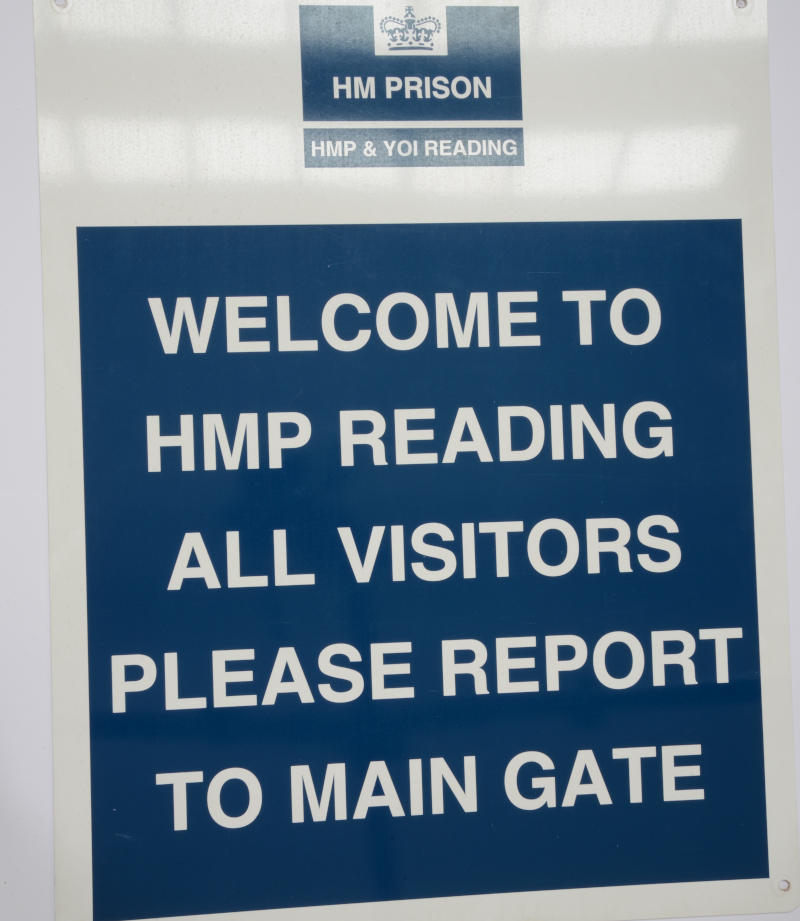
Welcome to HMP Reading sign, removed 2013 (museum no. 2013.526.2)
The Future - What's happening to Reading Gaol?
From 4 September to 30 October 2016, Reading Gaol hosted 'Inside: Artist and Writers in Reading Prison', an exhibition commissioned by Artangel as part of Reading 2016, Reading's Year of Culture. This inspired campaigning by the Council and local cultural organisations to transform the prison into a cultural and heritage centre. Many actors, including Reading's own Kate Winslet and Sir Kenneth Branagh, are supporting the cultural plans, and street artist Banksy added his support with a new artwork 'Create Escape' that appeared overnight on the prison wall on 1 March 2021. The Ministry of Justice put the Grade II listed site up for sale in 2019.
This week, Reading Borough Council shared their vision document outlining how they would preserve the Gaol site, providing a creative space for the community of our town whilst preserving the heritage of this important site in Reading's history for future generations.
“This is once in a lifetime opportunity to deliver a unique culture and heritage hub for Reading. We firmly believe a successful bid by the Council would be a game changer. A catalyst for further investment in Reading, a key driver in our recovery from Covid and the creation of a site of local, regional and national significance in the heart of our town and in our historic Abbey Quarter.”
- Cllr Jason Brock, Leader, Reading Borough Council
Find out more
You can find many objects and artworks related to Reading Prison on the Museum's online collections website, or the Berkshire Record Office's Reading Prison and Oscar Wilde online exhibition.





